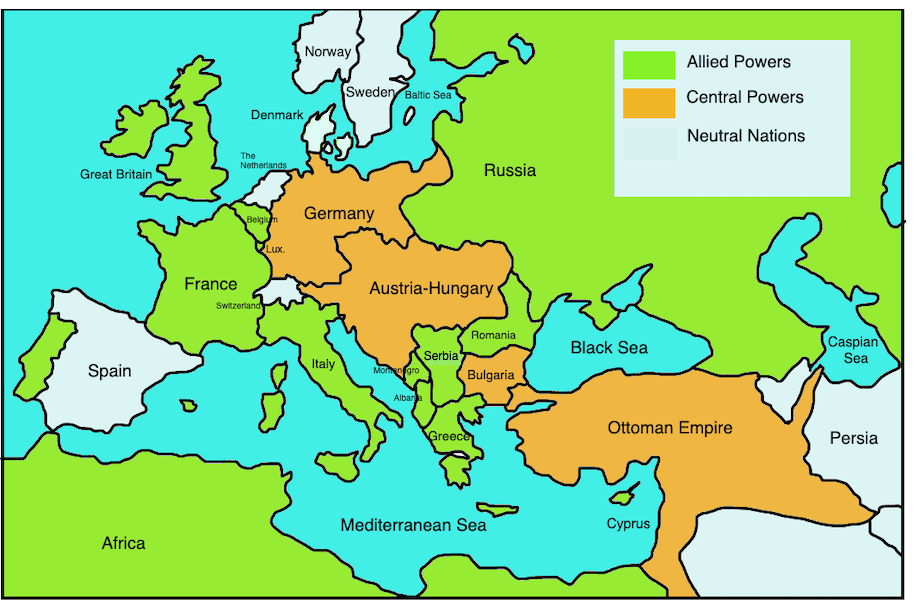| World War I Alliances |
| Introduction |
| Triple Alliance |
| Triple Entente |
| Central Powers |
| Allied Powers |
 |
The Central Powers were a coalition of nations that fought against the Allied Powers in World War I. The Central Powers were made up of Germany, Austria-Hungary, the Ottoman Empire, and Bulgaria. The alliance was formed in response to the Triple Entente, a coalition of Great Britain, France, and Russia, which had formed in the years leading up to the war.
The Central Powers were led by Germany, which was the most powerful and influential member of the alliance. Germany had a strong military tradition and had been rapidly industrializing in the decades leading up to the war. The other members of the alliance looked to Germany for leadership and guidance in military and diplomatic matters.
Austria-Hungary was another major member of the Central Powers. The Austro-Hungarian Empire was a multinational state with a complex political structure that included a number of ethnic and linguistic groups. The empire was struggling to maintain its stability and unity in the years leading up to the war, and it looked to Germany for support and protection.
The Ottoman Empire, which controlled much of the Middle East, North Africa, and southeastern Europe, was also a member of the Central Powers. The empire had been in decline for centuries and was facing significant economic and political challenges in the early 20th century. The Ottoman government saw an opportunity to gain prestige and power by aligning itself with Germany and the other Central Powers.
Bulgaria, which had a long history of conflict with the Ottoman Empire, also joined the Central Powers. Bulgaria hoped to gain territory and influence in the Balkans by siding with Germany and Austria-Hungary.
The Central Powers were united in their opposition to the Allied Powers and their desire to maintain their respective territories and spheres of influence. However, the alliance was not without its challenges. The different members of the Central Powers had their own interests and priorities, and they sometimes clashed over strategy and resources.
The Central Powers launched a series of offensives against the Allied Powers in the early years of the war. They enjoyed some early successes, including the invasion of Belgium and the occupation of much of northern France. However, the tide of the war began to turn against them after the entry of the United States into the conflict in 1917.
The Central Powers were ultimately defeated in 1918. Germany and Austria-Hungary were both facing internal political unrest and economic collapse, while the Ottoman Empire was struggling to maintain its territorial integrity in the face of Allied advances. Bulgaria was also facing significant military setbacks and political turmoil.
The collapse of the Central Powers marked the end of World War I and set the stage for the Treaty of Versailles, which imposed significant penalties and restrictions on Germany and its allies. The legacy of the Central Powers can still be seen in the modern world, as the aftermath of World War I helped to reshape the political and economic landscape of Europe and the Middle East.